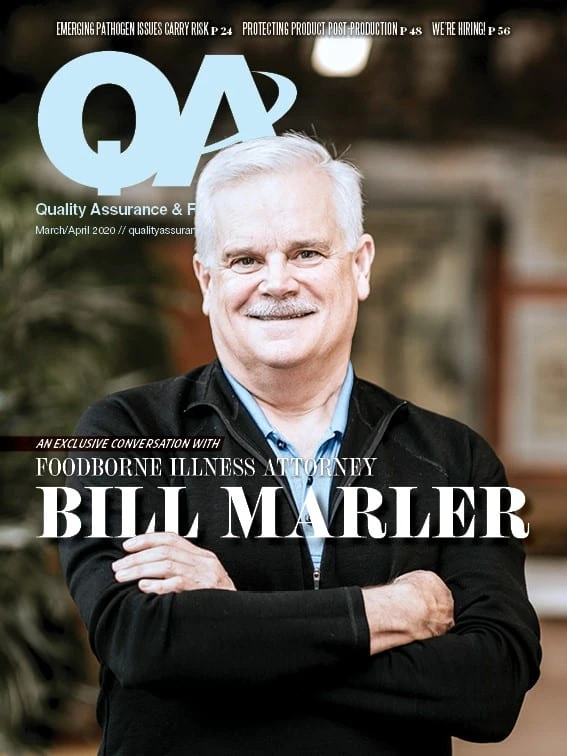
Over the past 25 years, we have witnessed a food safety focus on meat and poultry that eventually included recalls and outbreaks tied to cantaloupe, leafy greens, sprouts, caramel apples, ice cream, peanut butter, and other produce. Ready-to-eat and commercially packaged goods such as cereals and salads also found their way onto lists of contaminated products. The USDA’s Pathogen Reduction Program and the FDA Food Safety Modernization Act (FSMA) stand as examples of the most significant advances by regulators and the hard work of many — most notably young survivors, parents, experts, victims’ lawyers, and advocacy groups.
Even with government regulations, science-based inspections, and audit systems in place, America’s “safest in the world” food supply is far from perfect. Reality holds that no large corporation is immune to failures that happen before, during, or after their involvement with a product. Further, we have seen the seemingly uninterrupted cycle of crisis and reform through headline after headline of multistate outbreaks and huge recalls involving major labels and national retail or restaurant chains.
Many times, even the efforts of those companies and leaders who did everything they could to protect their consumers would be thwarted by improper handling, inadequate cooking, or some other action down the line. However, news coverage and even documentaries highlight investigation after investigation and lawsuit after lawsuit.
There will never be an end to pathogens in our food, but we can change the culture around the future of food safety. To do so will require a Herculean effort: an enormous amount of work, strength, and courage. Food safety’s past, present, and future involves reform across the full spectrum of economic, geographic, legal, political, and social systems.
In my book to be published this year, Food Safety: Past, Present, and Predictions (Elsevier Academic Press, June 2020) (https://bit.ly/3atON3j), I draw upon my research, experiences, and dozens of interviews of leaders from industry to government and beyond. The book offers a multidisciplinary approach to major food industry regulatory compliance changes that have emerged since the landmark 1993 E. coli outbreak, providing a look back at decades of change to better conceptualize the future of effective and sustainable food safety compliance efforts and technologies. Historical case studies and technological developments are written by experts and those who played key roles in events.
I share my personal experience and perspective in regard to Jack in the Box, FSMA, and the Peanut Corporation of America (PCA). I also bring in interviews with multiple leaders and participants whose first-hand knowledge adds details never before shared in books on related topics. This “behind the scenes” approach provides a clear understanding about the how and why behind laws and policies that many take for granted.
Get curated news on YOUR industry.
Enter your email to receive our newsletters.

Explore the March April 2020 Issue
Check out more from this issue and find your next story to read.
Latest from Quality Assurance & Food Safety
- Q&A: Sandra Eskin Leads Food Safety Advocacy Organization, STOP, as CEO
- STOP CEO Eskin on Government Layoffs, Challenges in Food Safety
- Mission Barns Announces Cell-Cultivated Pork Fat Launch Following FDA Clearance
- Hearthside Food Solutions Recalls Breakfast Sandwiches Due to Undeclared Allergen
- Walker’s Wine Juice Recalls Pumpkin Juice Due to Botulism Risk
- The Cascading Food Safety Impacts of Tariffs on the Food Industry
- Tyson Ventures Calls Startups to Apply for Tyson Demo Day
- Student Finalists Selected for IFT Product Development Competitions






